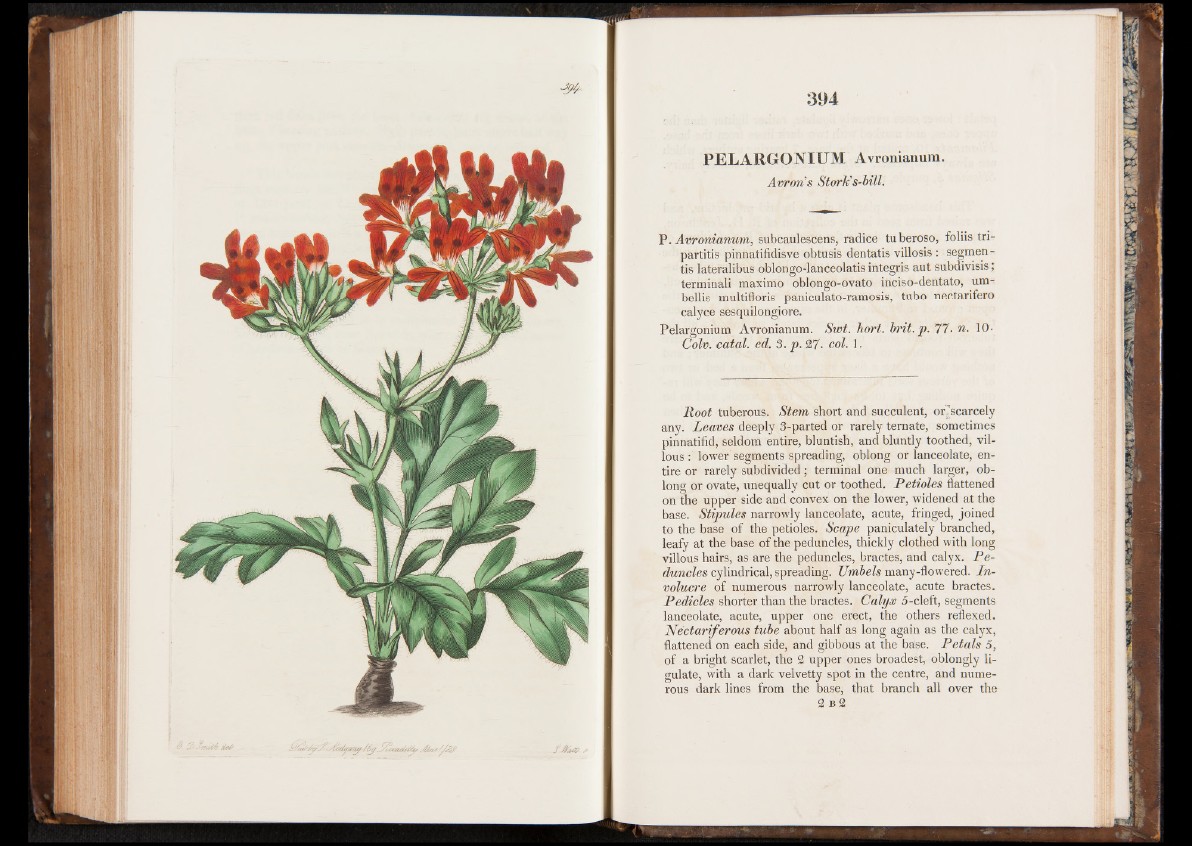
P . Avronianum, subcaulescens, radice tuberoso, foliis tri-
partitis pinnatifidisve obtusis dentatis villosis : segmentas
lateralibus oblongo-lanceolatis integris aut subdivisis;
terminali maximo oblongo-ovato inciso-dentato, um-
bellis multifloris paniculato-ramosis, tubo nectarifero
calyce sesquilongiore.
Pelargonium Avronianum. Swt. hort. brit.p. 77 ■ n. 10- Colv. catal. ed. 3. p. 27. col. 1.
Root tuberous. Stem short and succulent, orTscarcely
any. Leaves deeply 3-parted or rarely ternate, sometimes
pinnatifid, seldom entire, bluntish, and bluntly toothed, villous
: lower segments spreading, oblong or lanceolate, entire
or rarely subdivided ; terminal one much larger, oblong
or ovate, unequally cut or toothed. Petioles flattened
on the upper side and convex on the lower, widened at the
base. Stipules narrowly lanceolate, acute, fringed, joined
to the base of the petioles. Scape paniculately branched,
leafy at the base of the peduncles, thickly clothed with long
villous hairs, as are the peduncles, brades,duncles and calyx. Pevolucre
cylindrical, spreading. Umbels many-flowered. In
of numerous narrowly lanceolate, acute bractes. Pedicles shorter than the bractes. Calyx 5-cleft, segments
lanceolate, acute, upper one erect, the others reflexed. Nectariferous tube about half as long again as the calyx,
flattened on each side, and gibbous at the base. Petals 5,
of a bright scarlet, the 2 upper ones broadest, oblongly li-
gulate, with a dark velvetty spot in the centre, and numerous
dark lines from the base, that branch all over the